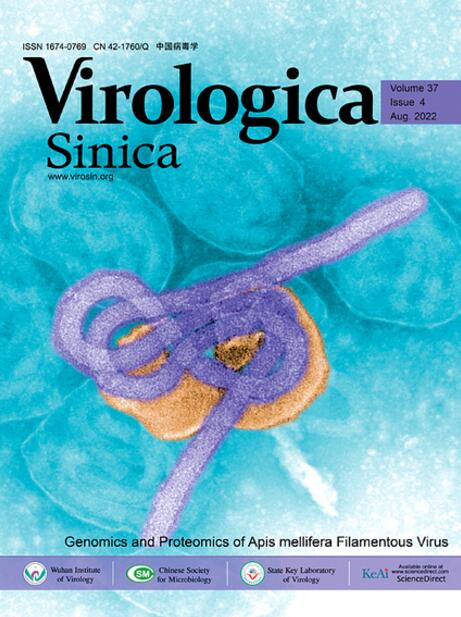Elevated interferon-induced transmembrane protein 3 in platelets and megakaryocytes suppresses Crimean-Congo hemorrhagic fever viral infection by interacting with glycoprotein Gc
IF 4
3区 医学
Q1 Medicine
引用次数: 0
Abstract
Crimean-Congo hemorrhagic fever (CCHF) is a hemorrhagic fever caused by infection with the CCHF virus (CCHFV) and has a mortality rate of up to 30 %. Thrombocytopenia is a hallmark of CCHF; however, the mechanisms underlying this manifestation remain poorly understood. In addition to hemostasis, platelets play a crucial role in recognizing pathogens and mediating immune responses. We investigated the mechanisms underlying thrombocytopenia associated with CCHFV infection by analyzing the platelet transcriptome in mice. Interferon-induced transmembrane protein 3 (IFITM3), a known antiviral factor, was significantly upregulated. The role of IFITM3 in response to CCHFV infection was characterized using the human megakaryoblast cell line MEG-01, considered a parental cell line of platelets. Although the CCHFV infection rate was limited, MEG-01 cells maintained the infection and replication of CCHFV, leading to increased IFITM3 protein expression. We demonstrated that IFITM3 overexpression efficiently inhibited CCHFV infection, whereas IFITM3 knockout promoted viral infection. An interaction between IFITM3 and the CCHFV glycoprotein Gc was identified, which suppressed CCHFV entry into cells. The IFITM3 CIL-TMD domain is critical for this interaction. These results suggest that IFITM3 is a restriction factor and plays an antiviral role during CCHFV infection. Elevated expression of IFITM3 in platelets indicates that this could be a common mechanism by which platelets protect against viruses, including CCHFV, which may reduce platelet consumption and destruction caused by CCHFV infection. These findings provide valuable insights into the pathogenesis of CCHF-associated thrombocytopenia and offer foundational theoretical support for future therapeutic strategies.
血小板和巨核细胞中干扰素诱导的跨膜蛋白3升高通过与糖蛋白Gc相互作用抑制克里米亚-刚果出血热病毒感染。
克里米亚-刚果出血热(CCHF)是由感染克里米亚-刚果出血热病毒(CCHFV)引起的出血热,死亡率高达30%。血小板减少是慢性心力衰竭的标志;然而,这种表现背后的机制仍然知之甚少。除了止血,血小板在识别病原体和介导免疫反应中起着至关重要的作用。我们通过分析小鼠血小板转录组来研究与CCHFV感染相关的血小板减少的机制。干扰素诱导的跨膜蛋白3 (IFITM3),一种已知的抗病毒因子,显著上调。IFITM3在应对CCHFV感染中的作用是通过人巨核母细胞系MEG-01来表征的,该细胞系被认为是血小板亲本细胞系。虽然CCHFV感染率有限,但MEG-01细胞保持了CCHFV的感染和复制,导致IFITM3蛋白表达增加。我们证明IFITM3过表达有效地抑制CCHFV感染,而IFITM3敲除促进病毒感染。发现IFITM3与CCHFV糖蛋白Gc相互作用,抑制CCHFV进入细胞。IFITM3 CIL-TMD结构域对这种相互作用至关重要。这些结果表明IFITM3是一种限制性因子,在CCHFV感染过程中发挥抗病毒作用。血小板中IFITM3的表达升高表明这可能是血小板抵抗病毒(包括CCHFV)的一种常见机制,这可能减少CCHFV感染引起的血小板消耗和破坏。这些发现为cchf相关血小板减少的发病机制提供了有价值的见解,并为未来的治疗策略提供了基础理论支持。
本文章由计算机程序翻译,如有差异,请以英文原文为准。
求助全文
约1分钟内获得全文
求助全文
来源期刊

Virologica Sinica
Biochemistry, Genetics and Molecular Biology-Molecular Medicine
CiteScore
7.70
自引率
1.80%
发文量
3149
期刊介绍:
Virologica Sinica is an international journal which aims at presenting the cutting-edge research on viruses all over the world. The journal publishes peer-reviewed original research articles, reviews, and letters to the editor, to encompass the latest developments in all branches of virology, including research on animal, plant and microbe viruses. The journal welcomes articles on virus discovery and characterization, viral epidemiology, viral pathogenesis, virus-host interaction, vaccine development, antiviral agents and therapies, and virus related bio-techniques. Virologica Sinica, the official journal of Chinese Society for Microbiology, will serve as a platform for the communication and exchange of academic information and ideas in an international context.
Electronic ISSN: 1995-820X; Print ISSN: 1674-0769
 求助内容:
求助内容: 应助结果提醒方式:
应助结果提醒方式:


